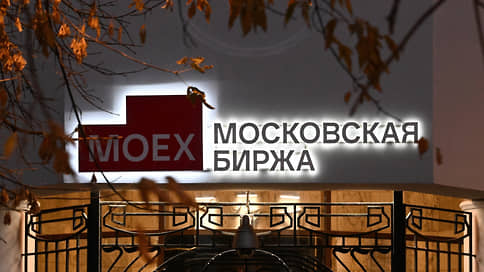The Moscow Exchange is tightening the rules for trading in low-liquidity shares from December 25
[ad_1]

From December 25, the Moscow Exchange is tightening the rules for trading in low-liquidity shares. In particular, when executing a limit order, the maximum deviation of their execution prices will be set at 5% from the price of the best counter order. This restriction already applies to market orders. Experts believe that the measure will somewhat correct the typical situation, when even a small number of orders placed with a significant spread in prices accelerates the volatility of quotes for low-liquidity shares, but soft regulation will not radically solve the problem.
The Moscow Exchange continued its active fight against “destabilization and high volatility of stock prices.” Wednesday, December 6, Marketplace announcedthat in the last week of the month a mechanism will be launched on the stock market to limit the aggressiveness of limit orders. It was developed jointly with the Bank of Russia and market participants, the exchange explains.
- It is clarified that from December 25, “when executing a limit order for shares and units, the maximum deviation of the order execution prices will be set at 5% from the price of the best counter order at the time of submitting the limit order.”
- The purpose of introducing an aggressiveness mechanism is to “protect investors from errors when submitting applications”, as well as “from possible losses due to significant price changes,” the exchange notes.
- And for the first time this mechanism was introduced on November 2, 2020 for market orders.
Towards the end of 2022, as well as at the beginning of 2023, low-liquidity stocks showed significant growth without objective reasons (see “Kommersant” dated February 17). In February 2023, due to the high volatility of a number of shares, the exchange limited the maximum daily increase in quotations to 10% for a number of shares. In March, the Central Bank and the Moscow Exchange began to work out ways to counter abnormal sharp jumps in the price of low-liquid securities. At the same time, the exchange announced new measures to combat price increases: were introduced discrete auctions for all shares with significant price deviations and narrow price corridors for securities with a small share of them in free float. From September 21 were introduced restrictions on the maximum deviation of prices of applications for the purchase of shares included in the third level of listing.
Sergey Shvetsov, Chairman of the Supervisory Board of the Moscow Exchange, October 12:
Now people have entered the stock exchange who don’t know very much about the stock market. Because it is such a complex substance.
According to the Digital Broker company, the introduction of such a restriction will prevent “fat finger errors” when a trader unintentionally presses the wrong keys.— “Kommersant”), which led to the setting of an underestimated or inflated price.” On the other hand, this “will not allow, due to concentrated large orders for purchase or sale, to sharply change the price of illiquid financial instruments,” the investment company explains. This is one of the forms of influence on slowing down the creation of “snowball situations”, when applications are placed in a larger range and, thus, add a change in quotes with an excessive tilt in one direction or another, said Oleg Bychkov, managing partner of the Pro’SPECT law office.
From its highs in the summer of 2023, the third-tier segment has already fallen by about 40%, and this leads to losses for retail investors and, as a result, concerns of the regulator and the stock exchange, says Dmitry Alexandrov, managing director of Ivolga Capital. “The exchange’s ability to influence volatility is limited; the Russian market is thin and vulnerable even to relatively small transactions. The exchange must do everything possible to smooth out market movements,” believes NAUFOR President Alexey Timofeev. Moreover, according to him, “the main market participant – the retail investor – is quite emotional and unprofessional.”
There are several fundamental reasons for increased price volatility on the Russian stock market, experts say. Firstly, This is the departure of non-resident investors, which provoked sharp fluctuations in the quotations of not only the second, but also the first tier of securities, notes independent financial analyst Andrei Barkhota. Secondly, according to him, these are initial placements of securities of issuers that are “not quite ready for an IPO.”
The expert expects that “new measures will gently regulate the amplitude of price changes during increasing homogeneous transactions,” and “peaks on price charts will be smoothed out by side trends.”
There are no risks for bona fide participants, since the measures are aimed at reducing the possibility of price manipulation, that is, at protecting the interests of the market and its participants, Mr. Bychkov believes. However, such soft regulation will not fundamentally solve the problem, Mr. Barhota believes. It is necessary to expand liquidity and the list of securities, removing barriers. “In this case, sharp fluctuations will be dampened by countermovements of the market itself,” the expert believes.
The Bank of Russia and the Moscow Exchange did not respond to Kommersant’s requests.
[ad_2]
Source link





